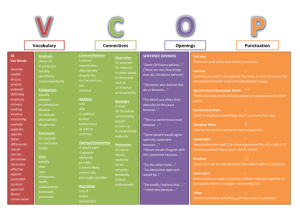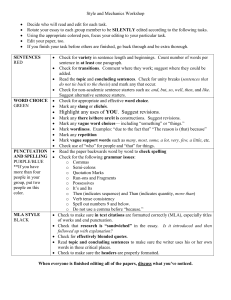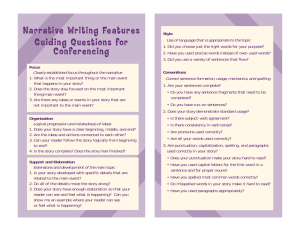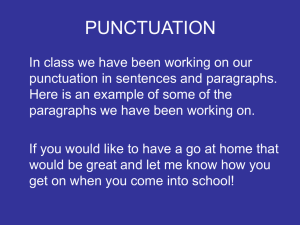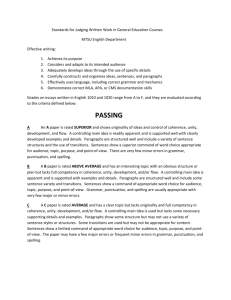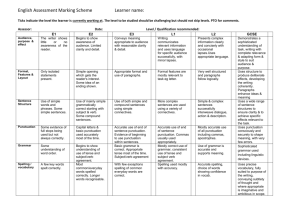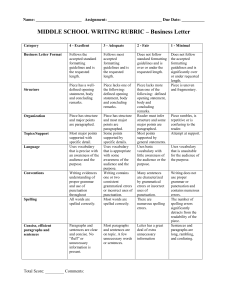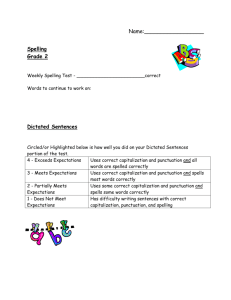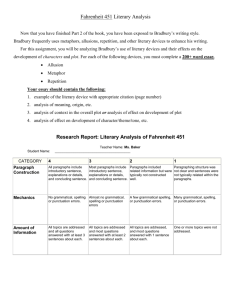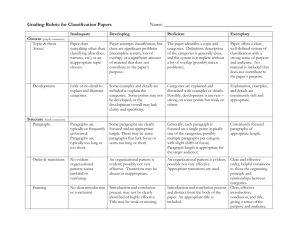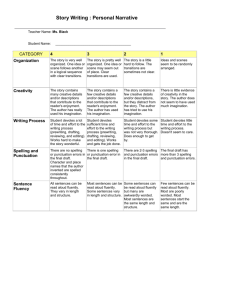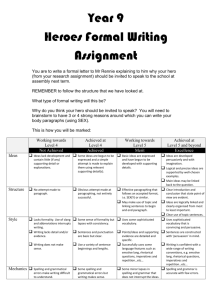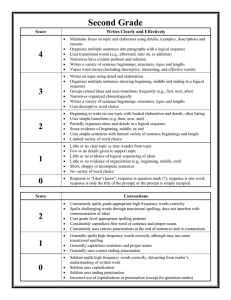Standards for Composition
advertisement
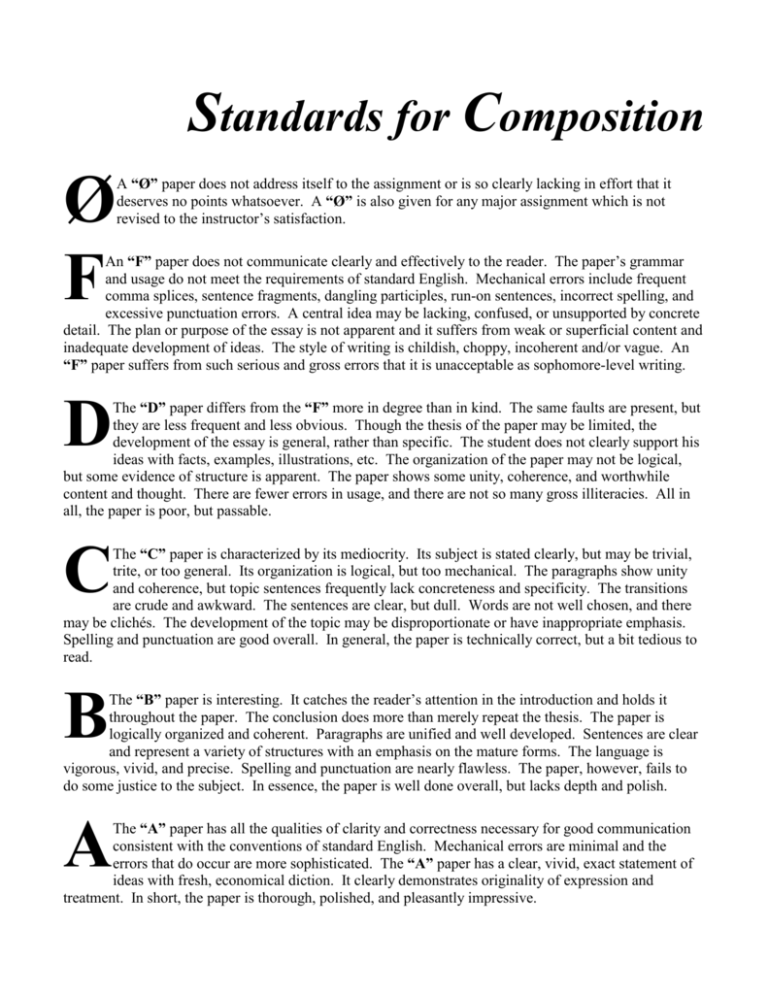
Standards for Composition Ø F A “Ø” paper does not address itself to the assignment or is so clearly lacking in effort that it deserves no points whatsoever. A “Ø” is also given for any major assignment which is not revised to the instructor’s satisfaction. An “F” paper does not communicate clearly and effectively to the reader. The paper’s grammar and usage do not meet the requirements of standard English. Mechanical errors include frequent comma splices, sentence fragments, dangling participles, run-on sentences, incorrect spelling, and excessive punctuation errors. A central idea may be lacking, confused, or unsupported by concrete detail. The plan or purpose of the essay is not apparent and it suffers from weak or superficial content and inadequate development of ideas. The style of writing is childish, choppy, incoherent and/or vague. An “F” paper suffers from such serious and gross errors that it is unacceptable as sophomore-level writing. D The “D” paper differs from the “F” more in degree than in kind. The same faults are present, but they are less frequent and less obvious. Though the thesis of the paper may be limited, the development of the essay is general, rather than specific. The student does not clearly support his ideas with facts, examples, illustrations, etc. The organization of the paper may not be logical, but some evidence of structure is apparent. The paper shows some unity, coherence, and worthwhile content and thought. There are fewer errors in usage, and there are not so many gross illiteracies. All in all, the paper is poor, but passable. C The “C” paper is characterized by its mediocrity. Its subject is stated clearly, but may be trivial, trite, or too general. Its organization is logical, but too mechanical. The paragraphs show unity and coherence, but topic sentences frequently lack concreteness and specificity. The transitions are crude and awkward. The sentences are clear, but dull. Words are not well chosen, and there may be clichés. The development of the topic may be disproportionate or have inappropriate emphasis. Spelling and punctuation are good overall. In general, the paper is technically correct, but a bit tedious to read. B The “B” paper is interesting. It catches the reader’s attention in the introduction and holds it throughout the paper. The conclusion does more than merely repeat the thesis. The paper is logically organized and coherent. Paragraphs are unified and well developed. Sentences are clear and represent a variety of structures with an emphasis on the mature forms. The language is vigorous, vivid, and precise. Spelling and punctuation are nearly flawless. The paper, however, fails to do some justice to the subject. In essence, the paper is well done overall, but lacks depth and polish. A The “A” paper has all the qualities of clarity and correctness necessary for good communication consistent with the conventions of standard English. Mechanical errors are minimal and the errors that do occur are more sophisticated. The “A” paper has a clear, vivid, exact statement of ideas with fresh, economical diction. It clearly demonstrates originality of expression and treatment. In short, the paper is thorough, polished, and pleasantly impressive.


